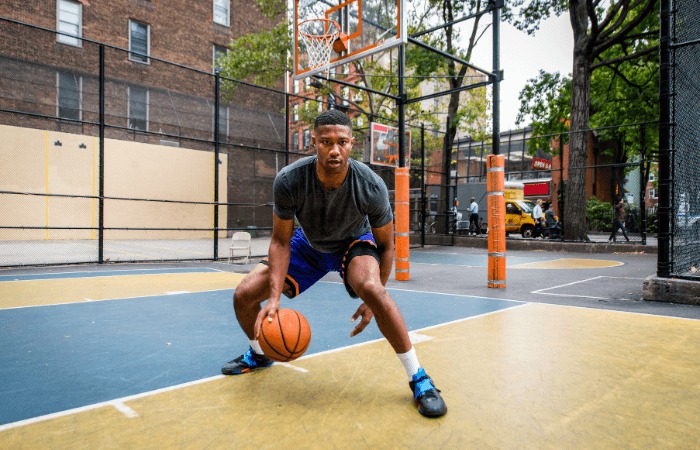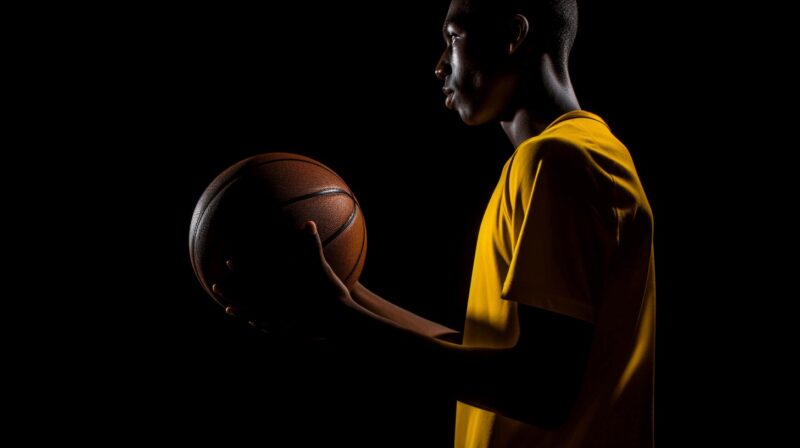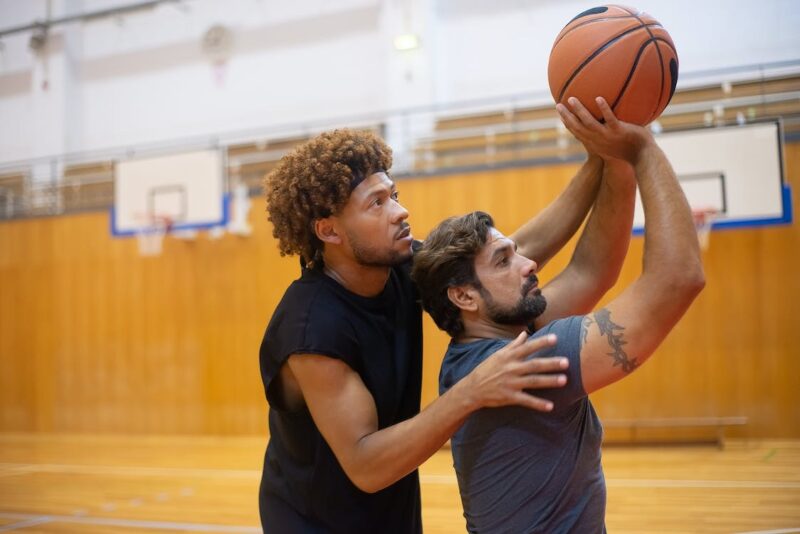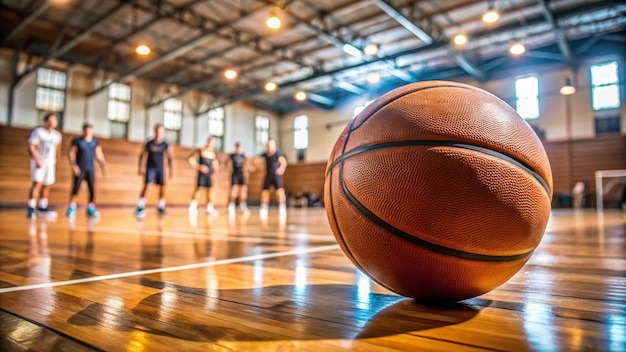Sharpening your basketball skills and building a strong foundation – just like the professionals – takes more than talent alone. Daily practice, smart drills, and dedication are the secrets behind those exciting and memorable plays you see on TV.
With a bit of space, a good ball, and the right mindset, you can also develop skills that will take your game to the next level. Having your own backyard basketball court can give you an extra advantage, but all you really need is the drive to keep improving.
A basketball court in your home means you can go out into the backyard whenever you have some spare time, and practice. If you only have a spare 10 minutes, it’s impossible to go down to your local court in that time, but it’s ample time to step outside at home and improve your game. Even if you don’t have a hoop at home, you can still do plenty of other things such as dribbling and passing (against a wall).
Training Beyond the Basics

Top players don’t just show up for scheduled team practices – they create extra training opportunities. Strength sessions, set plays, and coach-led drills are all important, but what sets the best apart is the work they do when no one is watching. Whether working on dribbling drills, improving footwork, or shooting reps until sunset, personal commitment is everything.
One of the best ways to make the most of your extra training hours is by focusing on your ball-handling skills.
Mastering Ball Handling With One Ball
Low Dribble Control: A great ball handler makes dribbling look effortless, and it all starts with low, controlled movements. Standing with your legs wide, practise dribbling the ball around and through your legs in a tight figure-eight. Start slow, keeping an eye on the ball if you need to, but work towards keeping your head up so you can survey the court like a true point guard.
Explosive Crossovers: These crossovers aren’t just flashy – they’re a practical tool for breaking through defenders. Start with the ball low to the ground and bounce it rapidly from one hand to the other, creating a sharp angle. Add a lunge or incorporate through-the-legs bounces to simulate movement under pressure. Over time, you’ll build fast, reactive hands and better court awareness.
Taking It Up a Notch With Two Balls

Double Dribble Reaction Drill: Using two basketballs pushes your coordination to the limit. Start by holding one ball against your body and dribbling the other, then switch hands quickly while crossing the dribbled ball over. This fast-switch drill sharpens both your control and reaction speed – two essential skills for navigating crowded plays.
Alternating Through-the-Legs Dribble: A favourite among serious players, this drill uses both balls to challenge balance and multitasking. Dribble both balls at your sides, and every few bounces, feed one through your legs and continue the pattern. Start slowly and build rhythm, gradually lifting your eyes off the ball to simulate real game scenarios.
2-Ball Juggling Drill: This helps with timing, balance and hand eye coordination. Keep both balls moving in the same direction in a circular motion (either clockwise or counter-clockwise). Bounce one ball over, hand the other over, bounce over, hand over, etc. Then change directions.
Turning Repetition Into Mastery

The real magic happens through repetition – the drills may seem basic at first – but consistent, focused practice transforms ordinary players into standouts. The key is to work through drills methodically, push for cleaner, faster movements, and challenge yourself with small variations to keep on track. Even casual games with friends can become valuable practice sessions if you focus on footwork, ball control, and reading the play.
Steph Curry, two times MVP winner, didn’t become the best shooter in the world just by chance. He takes an amazing 500 shots a day, minimum. Even when he reached the pinnacle of the NBA, he didn’t rest on his laurels, and continues to shoot that many shots.
As a youngster, Michael Jordan was continually beaten by his brother in on-court battles at the family home. Jordan was a competitor and hated to lose, so he worked over and over at his skill, until not only he could beat his brother, but could beat almost anyone in the world!
Dwight Howard was the best center in the NBA during his prime. But that didn’t stop him seeking improvement. One off-season he reached out to NBA legend Hakeem Olajuwon, and hired him to help him work on his post moves. Olajuwon had perhaps the greatest footwork out of any big man ever, and Dwight used this coaching and repetition to improve his game even further.
Record your basketball drills

Recording each of your basketball training sessions provides you with valuable tools for self-improvement. It allows you to identify areas requiring further development, and by presenting this to coaches or trainers you can request them to provide specific feedback to players. for detailed analysis of performance,
Here’s why recording your basketball drills as a player can be beneficial:
Motivation and Progress Tracking: Through repetitively watching your progress over time, it can be a powerful motivator, providing yourself the encouragement needed to gain additional focus to continue honing your skills on your journey to be a better player.
Self-Assessment: Recording yourself provides you with the ability to objectively review your performance, identifying both strengths and weaknesses which you might not have noticed during team training sessions.
Visual Feedback: Footage can be easily reviewed to gain a better understanding of techniques, footwork, and decision-making. With the high-quality recording technology now readily available this can allow you to slow things down and review frame by frame, leading to more informed fine tuning adjustments during training and in games.
Understanding A Coach’s Expectations: If you have a coach, your training footage can be used to demonstrate to them what skills you have been working on. Their valued feedback can help you understand specific expectations or instructions, improving clarity and consistency, as well as allowing you correct anything that you could be doing wrong.
Chasing Greatness Starts Today
There’s no shortcut to becoming a great basketballer – it takes patience, sweat, and thousands of purposeful repetitions. The drills you practise today, whether dribbling through cones or mastering your crossover, are the building blocks of future confidence and skill.
The more you practice, the more your muscles and brain work together automatically, in a phenomenon known as “muscle memory.” Over time, movements that were once difficult become natural and effortless. Start small, stay consistent, and let hard work open the door to bigger opportunities.
